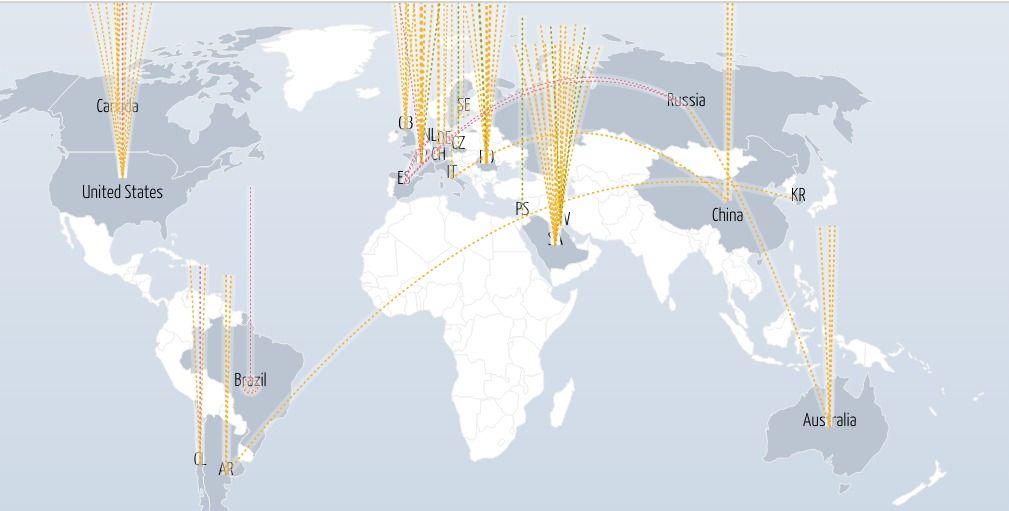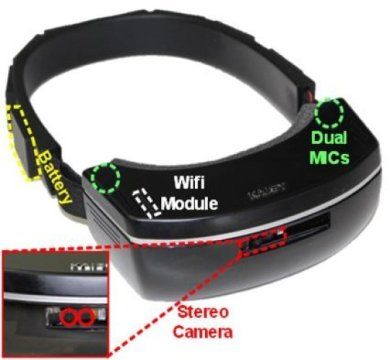How Legos, lasers, and reindeer are building the interplanetary internet.




The Internet full of incredible DIY projects that make you wish you had the years of experience required to build your own Batmobile, flaming Mad Max guitar, or hoverboard. Thankfully with the underlit miniskirt, we’ve come across a DIY item that looks awesome and is still easy to make.
This wearable was inspired by the Hikaru skirt, a programmable LED miniskirt that took certain corners of the Japanese Internet by storm earlier this year.



Annual list highlights the most important technology milestones.
Cambridge, MA – February 23, 2016: Today, MIT Technology Review publishes its annual 10 Breakthrough Technologies list (www.technologyreview.com/lists/technologies). The list identifies innovations from the past year that solve difficult problems or create powerful new ways of using technology. These are the breakthroughs that will matter for years to come.
Jason Pontin, Editor in Chief and Publisher, states, “Each year, our editors search the globe to create this important list. From Beijing, China, where researchers are creating fungus-resistant wheat and boosting rice crop yields, to Seattle, where a spin-off company of the University of Washington is commercializing “passive Wi-Fi,” making data connections using 1/10,000th as much power as existing Wi-Fi, the 10 Breakthrough Technologies represent the advancements we feel have the greatest potential to impact our lives for years to come.”

Scientist have created tiny supercapacitators that can be embedded directly on a microchip, a game-changer that promises smaller, more powerful devices.
As the semiconductor industry begins to adjust to a new roadmap, research on microchips is being focused less on Moore’s Law (the arithmetic increase through time in the power of microchips) but instead on incremental changes related to the developing Internet of Things, such as increasing RAM or integrating gyroscopes or GPS sensors.
An important part of these changes include building more efficient energy storage devices to power these additional sensors. This development of high-performance batteries would go a long way to enable long-lived sensors and radio frequency identification (RFID) tags. The problem, however, is that miniaturized energy storage devices are not only difficult to produce but they often fail to function well with other electronics.

K-Glass, smart glasses reinforced with augmented reality (AR) that were first developed by the Korea Advanced Institute of Science and Technology (KAIST) in 2014, with the second version released in 2015, is back with an even stronger model. The latest version, which KAIST researchers are calling K-Glass 3, allows users to text a message or type in key words for Internet surfing by offering a virtual keyboard for text and even one for a piano.
Currently, most wearable head-mounted displays (HMDs) suffer from a lack of rich user interfaces, short battery lives, and heavy weight. Some HMDs, such as Google Glass, use a touch panel and voice commands as an interface, but they are considered merely an extension of smartphones and are not optimized for wearable smart glasses. Recently, gaze recognition was proposed for HMDs including K-Glass 2, but gaze is insufficient to realize a natural user interface (UI) and experience (UX), such as user’s gesture recognition, due to its limited interactivity and lengthy gaze-calibration time, which can be up to several minutes.
As a solution, Professor Hoi-Jun Yoo and his team from the Electrical Engineering Department recently developed K-Glass 3 with a low-power natural UI and UX processor to enable convenient typing and screen pointing on HMDs with just bare hands. This processor is composed of a pre-processing core to implement stereo vision, seven deep-learning cores to accelerate real-time scene recognition within 33 milliseconds, and one rendering engine for the display.

BMI’s (according to DARPA and David Axe) could begin as early as 2017 on humans. The plan is to use stentrodes. Testing has already proven success on sheep. I personally have concerns in both a health (as the article highlighted prone to blood clots) as well as anything connecting via Wi-Fi or the net with hackers trying to challenge themselves to prove anything is hackable; that before this goes live on a person we make sure that we have a more secure hack-resistant net before someone is injured or in case could injure someone else.
Soldiers could control drones with a thought.

You could say that Illumina is to DNA sequencing is what Google is to Internet search, but that would be underselling the San Diego-based biotech company. Illumina’s machines, the best and cheapest on the market, generate 90 percent of all DNA sequence data today. Illumina is, as they say, crushing it.
But as lucrative as that 90 percent slice is for Illumina now, the whole pie is likely to get even bigger in the future. Less than 0.01 percent of the world’s population has been sequenced so far. So recently, Illumina has made bold moves positioning itself for the future: The company is consolidating its core hardware business—this week, it sued an upstart competitor, Oxford Nanopore Technologies, for patent infringement—while moving into the genetic testing business with new ventures like the liquid cancer biopsy spinoff, Grail.
The company is a looking toward a future in which a lot more people gets genetic tests—and a lot more often. “Grail’s business will be very different than Illumina’s core business,” Eric Endicott, Illumina’s director of global public relations, said in an email. “We are at a tipping point in genomics, where a broad community of scientists and researchers continue to translate the potential of the genome from science to discoveries and applications.”